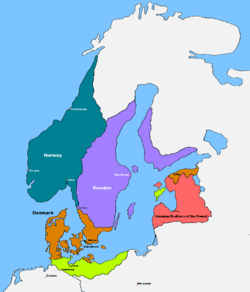Latest News for: northern crusades
Edit
League of Ireland move 'doesn't strengthen case' of NI players says Michael O'Neill
Yahoo Daily News 18 Mar 2025
Edit
Riordan ready to put state championship stamp on historic boys basketball season
East Bay Times 14 Mar 2025
SAN FRANCISCO – With every thunderous dunk, suffocating defensive sequence and convincing victory against Bay Area foes, the overpowering Archbishop Riordan boys basketball team has left no doubt it is the finest team in Northern California.
Edit
St. Cloud Cathedral remains unstoppable against Mahtomedi in state hockey quarterfinals
SC Times 06 Mar 2025
Edit
Mike Randolph and his Northern Lakes Lightning ‘love adversity’
Duluth News Tribune 06 Mar 2025
PAUL — At the beginning of the season, Northern Lakes coach Mike Randolph did something the Lightning players hadn’t experienced before ... Things might have been worse after Northern Lakes was on the wrong side of a 6-1 beating at the hands of St.
- 1


